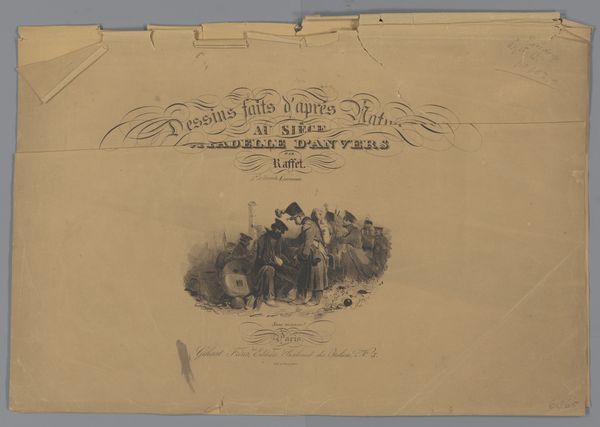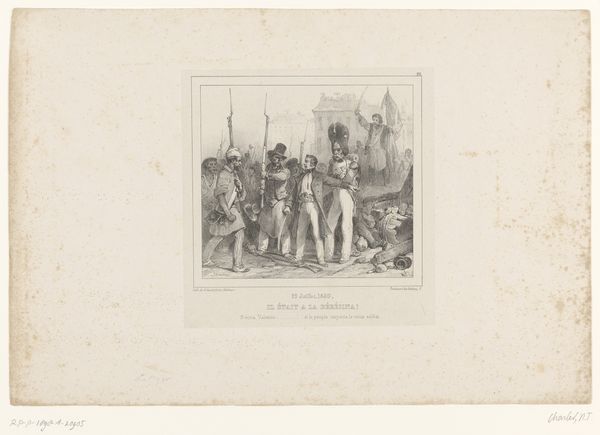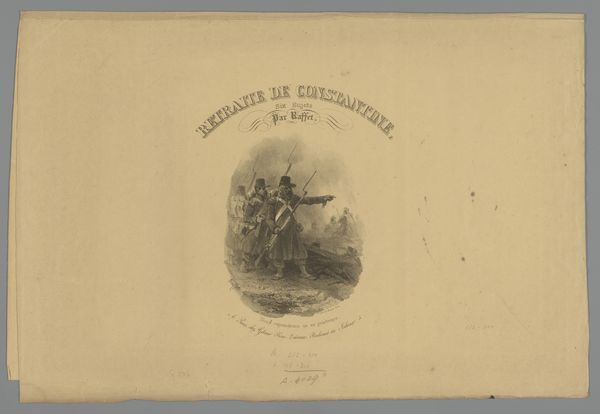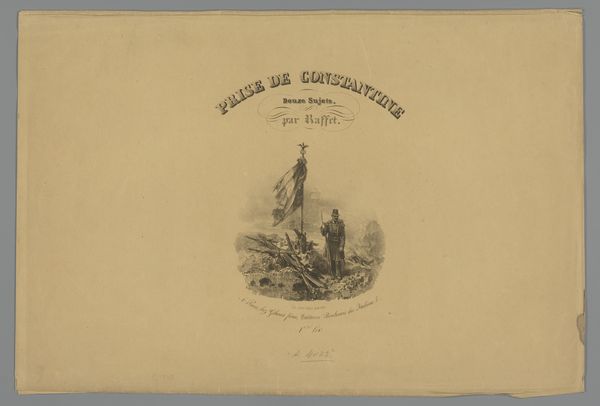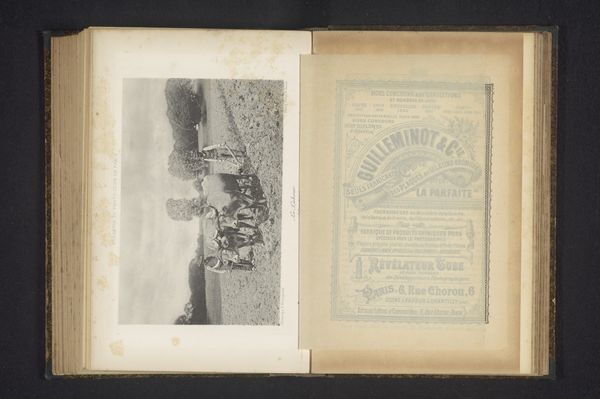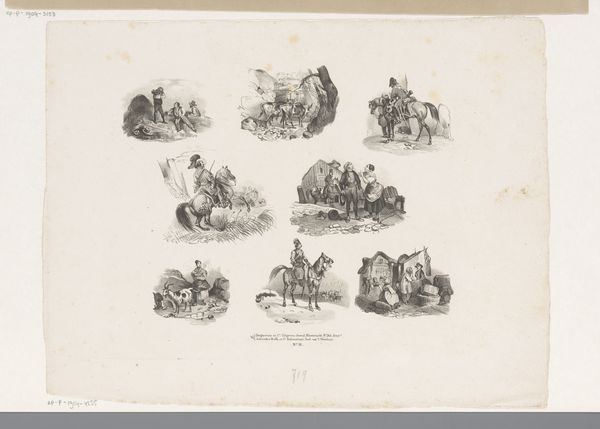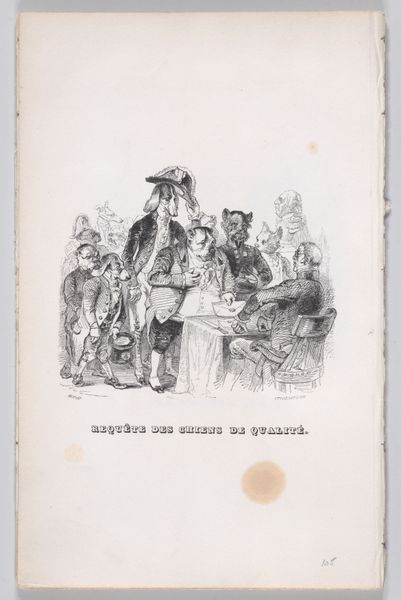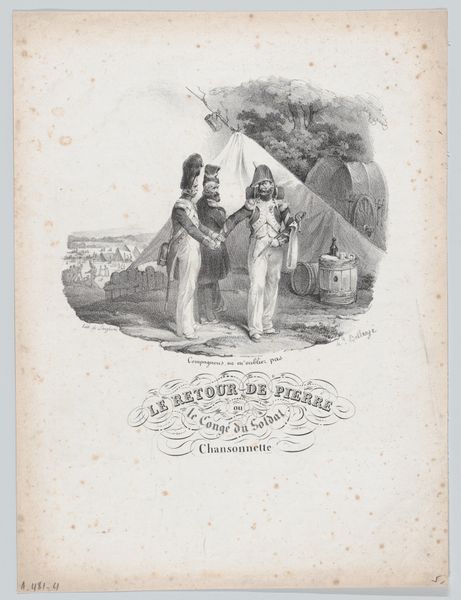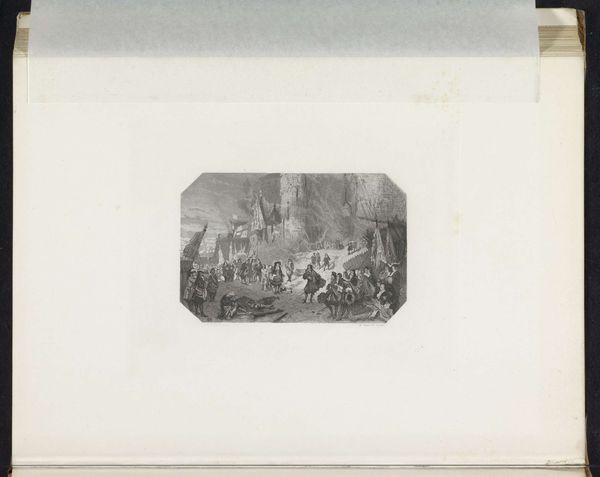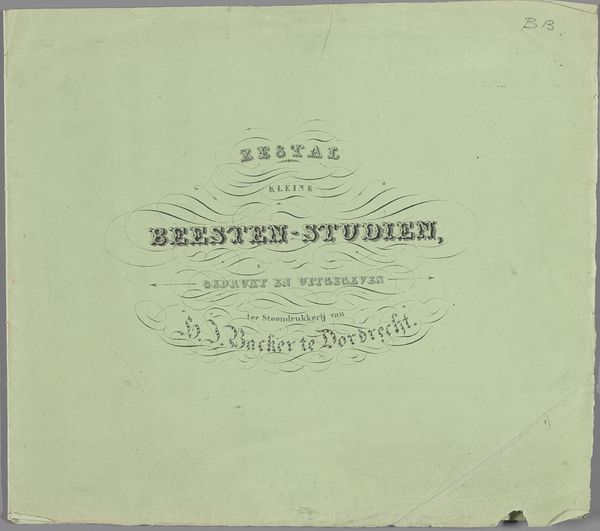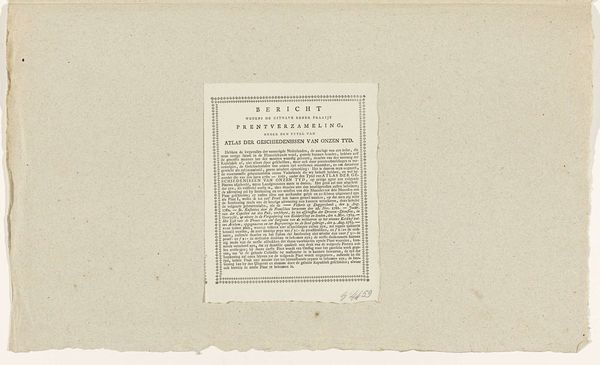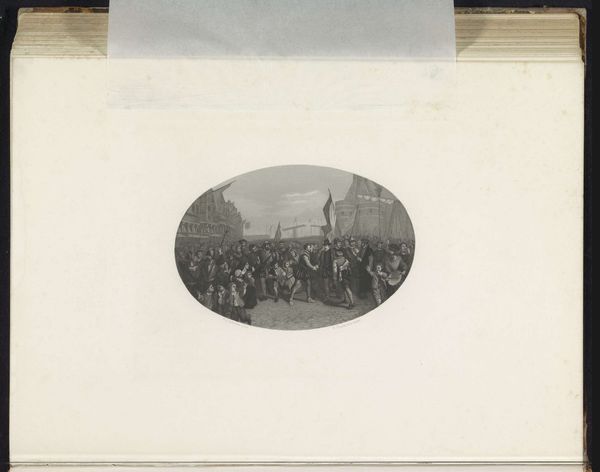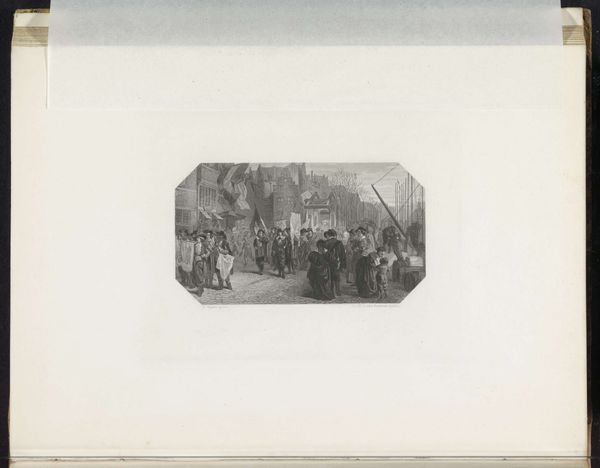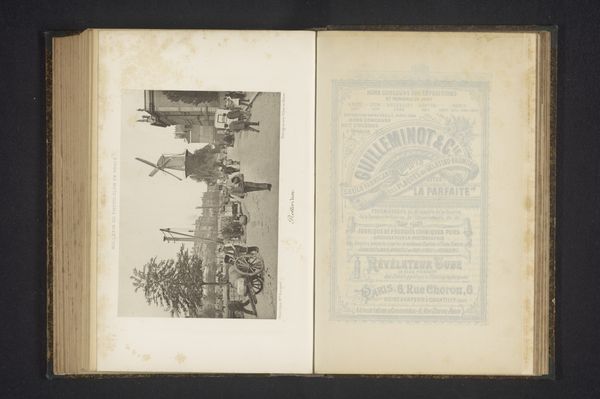
Inlegvel bij de serie prenten over het beleg van de Citadel van Antwerpen, 1832 1833
0:00
0:00
drawing, lithograph, print, paper, watercolor, ink
#
drawing
#
narrative-art
#
lithograph
# print
#
paper
#
watercolor
#
ink
#
romanticism
#
watercolour illustration
#
history-painting
Dimensions: height 330 mm, width 510 mm
Copyright: Rijks Museum: Open Domain
Editor: Here we have "Inlegvel bij de serie prenten over het beleg van de Citadel van Antwerpen, 1832" by Auguste Raffet, created in 1833. It's a print made with lithograph, ink, watercolor and drawing on paper. The figures huddle together in what appears to be a bleak landscape, which certainly evokes a somber mood. I'm curious, what do you see in this piece? Curator: Let us focus on the composition. Notice the contrast between the concentration of figures in the center and the expanse of empty space surrounding them. The artist employs a limited palette, emphasizing tonal variations within a narrow range to establish form. Editor: Yes, I notice the limited color palette which seems typical of lithographs, but there’s also a subtle wash effect. What does it add to the scene? Curator: Indeed. The watercolor adds depth and softens the edges, preventing a harsh, graphic appearance. Consider how Raffet uses line and texture to define the figures’ clothing and their interactions, leading your eye around the cluster. Editor: So, is it essentially the balance of line, tone and texture that defines the image? Curator: Precisely. It's how these elements combine and relate to one another. How would the image be different if, for instance, a wider range of color had been applied or figures evenly dispersed? Editor: I see, by limiting these things, Raffet creates a feeling of unease, focusing your attention entirely on the group. Thanks, I hadn't thought about it that way before. Curator: Observing such effects reminds us of how powerfully the structural components contribute to the impact of an artwork.
Comments
No comments
Be the first to comment and join the conversation on the ultimate creative platform.
